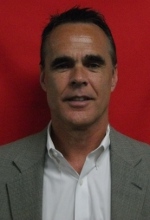 Tom Sakovits, Director of Financial Services, Endoscopy Division FUJIFILM Medical Systems U.S.A., Inc., discusses the challenges surgery centers face and budget-friendly tips for acquiring new technology in an age where every dollar counts.
Tom Sakovits, Director of Financial Services, Endoscopy Division FUJIFILM Medical Systems U.S.A., Inc., discusses the challenges surgery centers face and budget-friendly tips for acquiring new technology in an age where every dollar counts. This article is sponsored by FUJIFILM Medical Systems U.S.A., Inc.
It is no secret that healthcare is changing, but the full impact these changes will have on providers is still unknown. Surgery center leaders are constantly looking for ways to remain competitive in this changing market, and new technology is one way to attract patients. However, it can be an expensive proposition for surgery centers to stay on the cutting-edge in a time of declining reimbursement and financial pressure.
Tom Sakovits, Director of Financial Services, Endoscopy Division FUJIFILM Medical Systems U.S.A., Inc., discusses the challenges surgery centers face and budget-friendly tips for acquiring new technology in an age where every dollar counts.
1. Figure out where new technology fits into the budget. As the implementation of the Affordable Care Act grows nearer, healthcare providers will increasingly have to make the shift to high-quality, low-cost patient care. As this paradigm shift occurs, providers must also contend with a decrease in reimbursement and a rise in financial obligations.
"Financial pressure is not limited to reimbursement rates. Mandated investment in electronic medical records is expensive. Approximately 33 percent of capital dollars are being consumed by IT," he says. As a result, cost savings will now be one of the main drivers in provider strategy. Pay close attention to how new technology will fit into the ASC's budget before you begin exploring acquisition and financing opportunities.
2. Locate a vendor that understands an ASC's place within the healthcare market. New technology is in constant demand in healthcare. Equipment becomes out-dated or providers simply need additional technology to address patient needs. Even though this has not changed, the means of acquiring this technology has become a much greater concern.
"Financial solutions used to be an afterthought, but now this is the first thought. You must have an economical way to acquire needed equipment," says Mr. Sakovits. "On the financial services side, the industry is transforming itself because it needs to."
Surgery center leaders need to find a vendor that will better serve and support a cost-conscious strategy. Companies, such as Fujifilm, can provide practical financial strategies and solutions for equipment, as well as anything a surgery center may need from beds to a new space.
3. Build an individualized strategy. Though all surgery centers and providers are facing the challenges of the shifting healthcare environment, there is no one way to address these pressures. Surgery center leaders need to become savvier as the marketplace changes. "Capital is not as readily available," says Mr. Sakovits. "You can predict patient volumes, but not where funding will come from."
When considering the acquisition of new technology, surgery center leaders need to understand that there is not a "one-size-fits-all" solution. They should find a technology company that is capable of and willing to create a customized financial solution.
"At Fujifilm, we incorporate a certain degree of creativity that allows our customers to keep pace with the rapid changes in technology, all in a way that is based upon a budget and available dollars," says Mr. Sakovits.
4. Find creative financial solutions. The need for capital exceeds its availability. The need can be four or five times what is available. Though this is often the case, surgery center leaders can enter into feasible financial arrangements that allow for the acquisition of new technology without breaking the bank. "At Fujifilm, our goal is to keep our financial services affordable, creative and simple," says Kurt Cannon, Vice President, Sales, Marketing and Operations.
Surgery center leaders must be upfront and honest about their budgets. This is the only way to establish a productive, lasting relationship with a vendor. "If a customer has money, but not enough to afford a major piece of equipment upfront, we will have, for example, interest only offerings. We create a firm repayment plan that their capital budget allows," says Mr. Sakovits.
A tiered repayment structure is another example of a creative solution. "The payment escalates and then plateaus into a friendly stream of repayment as the equipment generates revenue," says Mr. Sakovits. "Appealing to surgery center leaders, we provide 100 percent financing. There are no down payments, whereas a standard banking solution will want to see a 20 to 25 percent down payment."
5. Calculate the potential return on investment. If surgery center leaders find a piece of equipment that will provide a significant return on investment coupled with a financial solution that works for their center, there is nothing stopping them from acquiring much needed technology.
"Cutting-edge equipment and cutting-edge financial solutions go hand in hand," added Mr. Sakovits. "If a surgery center is a prospective or established customer that can build a mutually valuable and constructive relationship with the vendor, there should be nothing off the table in terms of solutions."
